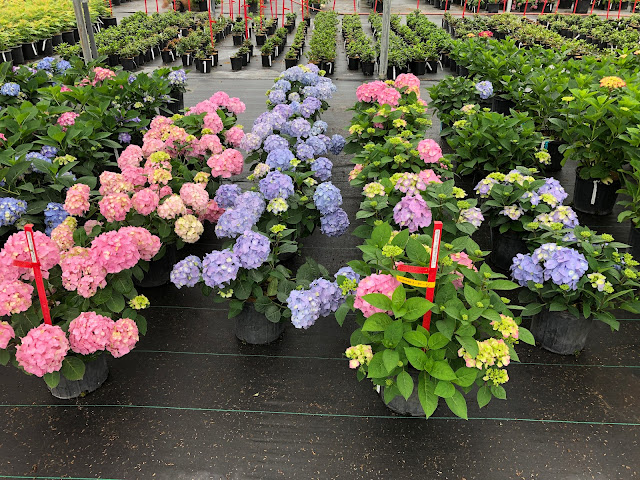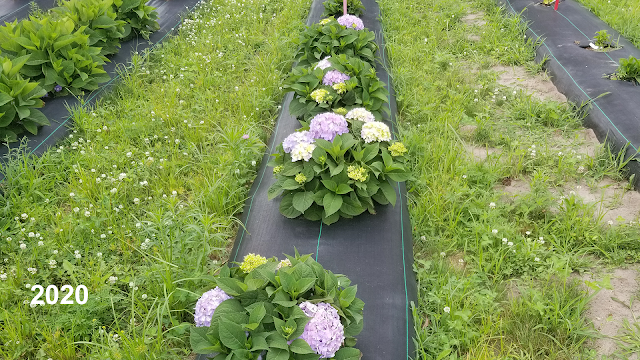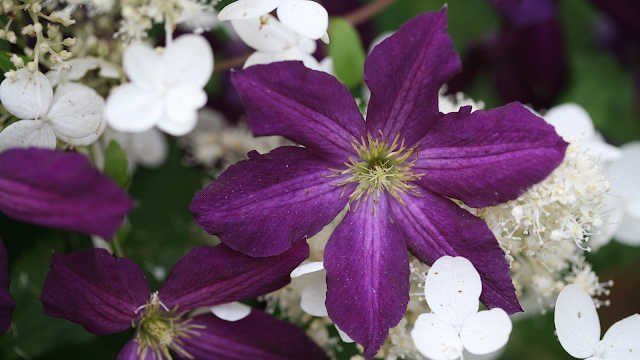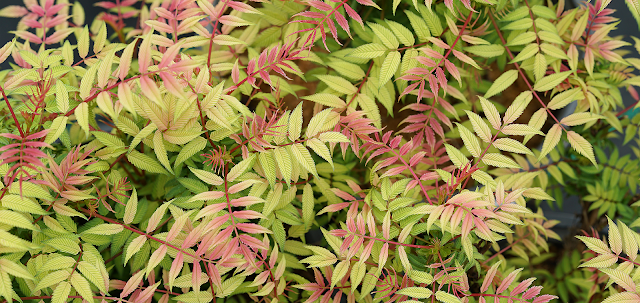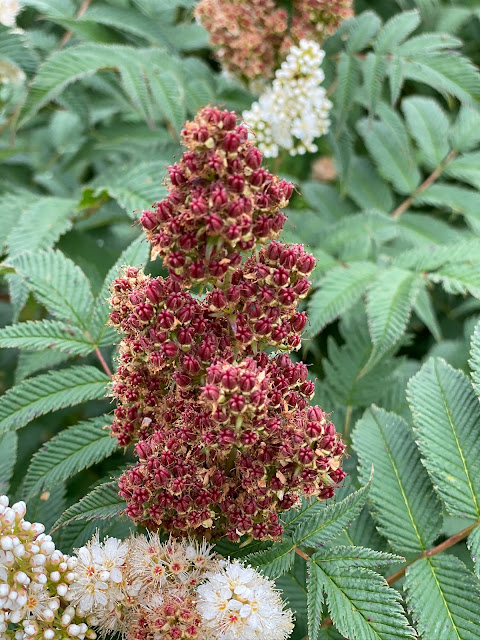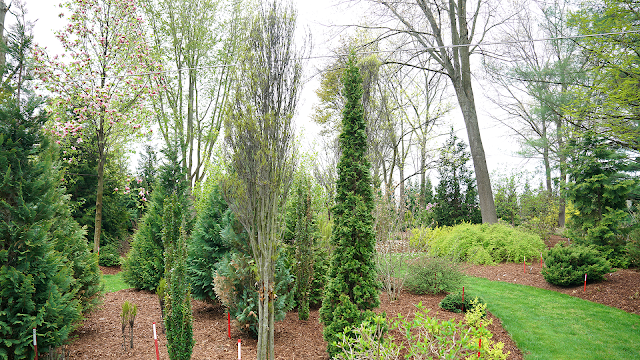As a general rule, Spiraea is known as a hardy, adaptable, and attractive ornamental shrub. And of the 90 different Spiraea species, few are as colorful and useful as Spiraea japonica. The species is very hardy, adaptable, and offers a wide range of flower and foliage colors. Add to this the ability to cross with other species, and you have an array of breeding opportunities. With Spiraea, as well as other species, observation and imagination are the first steps in plant breeding, so looking for and noticing things that others may miss brings new opportunities.

One of our early discoveries was a rich, pink-flowered Spiraea fritschiana that we named Pink
Parasols® (‘Wilma’). Known for its excellent hardiness and attractive autumn
foliage, Spiraea fritschiana is a low-mounded Korean native with large, attractive blooms that are normally pure
white. By pure luck, I found this pink-flowered anomaly in a batch of seedlings
at a local university. The seed source of this plant originated in Korea, and I
suspect it might have been an accidental hybrid with Spiraea japonica. Pink
Parasols is a low-mounded plant that is much wider than it is tall, making it
an excellent commercial landscape plant.
Another observation we made early on was that most spirea
are sold in the spring, well before the flowers appear. This means that the
color, texture, and health of the foliage is how most consumers judge the plants
they are buying. Further observation revealed that some seedlings had especially
good, colorful foliage when leafing out in the spring. Such was the case when we
crossed Pink Parasols Spiraea
fritschiana with a yellow-leafed Spiraea
japonica variety and came up with a number of unique, colorful hybrids.
After evaluating the top selections, we introduced one and named it Double Play
Big Bang® (Spiraea x ‘Tracy’). The
spring flush of foliage is a vibrant orange. As the foliage matures, it turns
bright yellow with contrasting red new growth. The pink flowers are
extra-large, getting this trait from Spiraea fritschiana. The plant cultivar
was named in honor of my wife, Tracy, and has proven itself to be a first-class garden and landscape plant. Thank goodness for that, because you don’t want to
name a bad plant after your wife!
 |
Double Play Big Bang |
It is amazing to note the difference in flowering between
cultivars as well as seedlings. Some plants only flower at the top while others
flower from top to bottom. The corymb (bloom) diameter varies greatly between
plants. The green-leafed varieties, Double Play Pink (Spiraea j. ‘SMNSJMFP’) and Double Play Artisan® (Spiraea j. ‘Galen’) were all selected
for large corymbs and bloom density from top to bottom, having pink and purple
flowers, respectively. Both cultivars are especially attractive in early spring
as the new foliage emerges burgundy-red.
 |
| Trialing is one of the most important parts of plant breeding. Double Play Artisan stands out from the crowd. |
Double Play Red® (Spiraea
j. ‘SMNSJMFR’) has beautiful cherry-red spring foliage, but is was
primarily selected for its uniquely colored, sangria-red flowers. It is the
truest red I have ever seen in a Spirea; better than ‘Dart’s Red’ and far
better than ‘Anthony Waterer.’ As the
flowers age, the dark red hues do transition to pink, so there are times when
the flowers will look more pink than red. Regardless, it is a truly unique and
beautiful plant.
 |
| Double Play Red (on the right) is the first true red spirea |
Many gold-leaved cultivars being grown in the nursery trade are susceptible to powdery mildew (Podosphaera
spiraeae). Double Play® Gold was introduced as a solution to this problem. Double Play Gold (Spiraea j. ‘Yan’) is a compact, dwarf, gold-foliaged plant adorned with bright, bubblegum pink flowers.
 |
| Double Play Gold |
While most of the plants in the Double Play series were developed
by Spring Meadow in our internal breeding program, two varieties were developed
by North Carolina State University. A number of years ago, we had funded Dr.
Thomas Ranney’s plant breeding team to develop sterile cultivars of potentially
invasive plants.
One of the common methods for sterile varieties is to create a
triploid (3x) plant that has three sets of chromosomes instead of the normal
two, a diploid (2x). This was the technique used to create seedless watermelons.
The process starts by treating young seedlings with colchicine or oryzalin,
which doubles the chromosomes, thus creating a tetraploid (4x) plant. The
tetraploid plant is then crossed back with a normal diploid plant. The
resulting triploid seedlings are often seedless. Double Play Doozie® (Spiraea japonica ‘NCSX2’) is a seedless
triploid, as well as a wide cross containing genes of more than one species.
One of the added benefits of seedless plants is that they put their energy into
flowering instead of setting seed. With Double Play Doozie Spiraea, this
results in a spirea that flowers all summer long.
 |
| Double Play Doozie spring foliage |
 |
| Double Play Doozie the first ever continuous blooming spirea |
This plant is a game changer
in the landscape market because it is so easy to grow and because it looks just
as good in flower in August as it does in June when it first flowers. There is
no need to shear it to get it to rebloom. The new growth continues to produce
flower buds and flowers that cover and hid the older flower heads. The flowers
are a vivid dark pink making it the perfect plant to replace ‘Anthony Waterer,’
a variety that should have been discontinued year ago because it is a virus
infected cultivar.
Double Play Candy Corn® (Spiraea japonica ‘NCSX1’), is
another Tom Ranney triploid hybrid, but it is not noted for being a rebloomer.
This plant variety was selected for its unique, colorful foliage. In the spring
the first flush of foliage emerges a fiery orange-red. As spring progresses,
the foliage color changes to a bright yellow and then eventually to a butter
yellow, while constantly being accentuated with bright reddish-orange hues in
the new growth. The color combination is quite unique and pleasing. The name
Candy Corn, pays tribute to a sickeningly sweet American Halloween candy
noted for its bright orange and yellow colors.
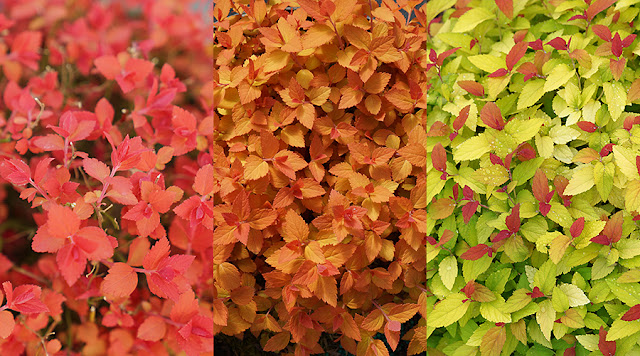 |
| The foliage transition of Double Play Candy Corn |
There is one more spirea in the Double Play series that is
not a Spiraea japonica, but rather a
selection of Spiraea media, a species
that is native to Eastern Europe. A number of years back we used to grow and
sell a Darthauzer nurseries variety named Snowstorm™ (Spiraea media 'Darsnorm'). After three or four generations of
inbreeding and selection, we singled out a dwarf plant with notable blue foliage.
We introduced it with the name Double Play Blue Kazoo (Spiraea media ‘SMSMBK’) a silly but memorable name based on the
silly children’s musical instrument. I love plants with colorful foliage,
especially blue foliage, and I believe this is a special plant. It is a low-mounded beauty with waxy, blue-green foliage that is randomly airbrushed with
a cast of purple hues. The large, white, spring blooms contrast wonderfully
with the richly colored foliage. Like all spirea, it looks best when planted en
masse.
 |
| Double Play Blue Kazoo foliage |
 |
| Blue Kazoo planting in bloom |
It is a bit humorous looking back, because so many people
told us we were wasting our time breeding Spiraea. They said, “Who needs
another spirea?” But like all plant breeding, there is always room for new plants
if they are improvements. Growers continue to look for plants that finish
faster and that have fewer production inputs. Retailers, with a limited number
of salespeople, are looking for plants with greater impulse appeal, which will
sell themselves. Consumers want shrubs that offer more than just two weeks of
flowers. They are looking for reliable plants that earn their keep all season
long, and these new spirea do just that.
Get more information on each of the Double Play varieties here.
